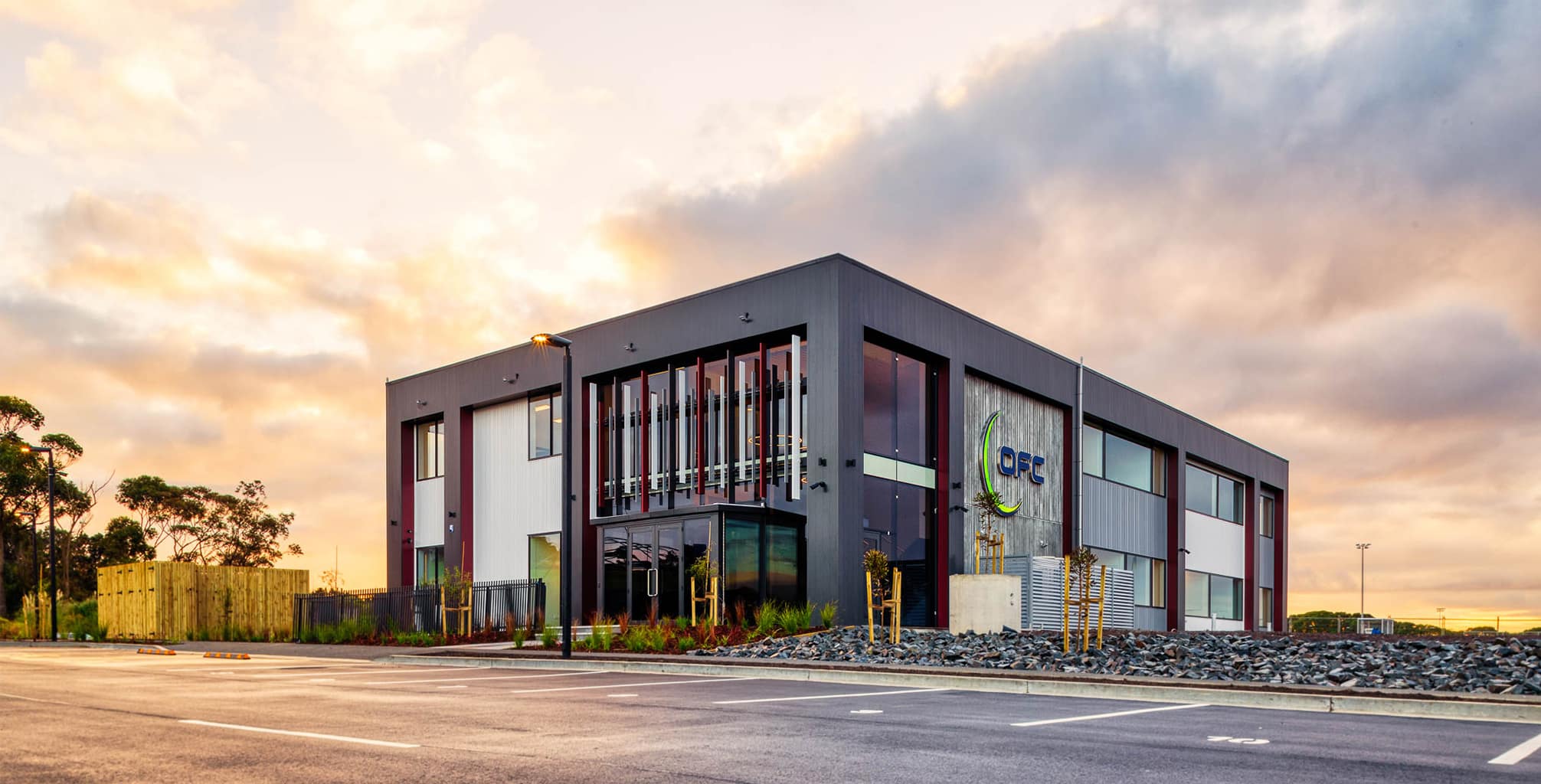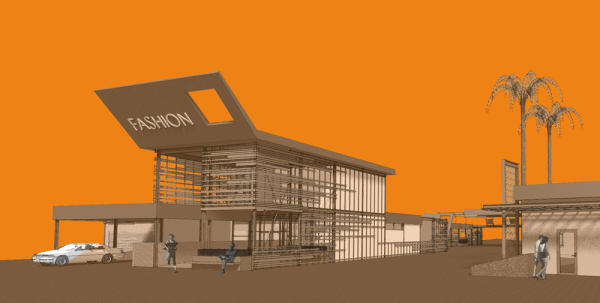Where commercial architects Use Smart Design Principles to Improve Project Outcomes
Discover the Innovative Services Provided by Commercial Architects for Your Next Job
Commercial architects play a vital role in shaping the constructed setting. They mix functionality with aesthetic charm, producing areas that resonate with brand name identification. These experts use innovative design services, lasting techniques, and advanced modern technologies to boost customer experiences. Their collective strategy assurances positioning with customer visions and operational needs. The extent of their solutions commonly prolongs past design. The following steps in comprehending how these architects navigate intricate project needs may stun you.
Recognizing the Role of Commercial Architects
The role of industrial architects may vary depending on the details task, their primary feature revolves around developing useful and cosmetically enticing rooms for services. These specialists are entrusted with recognizing the one-of-a-kind requirements of each client, whether it be a store, office structure, or commercial facility. They carry out extensive website evaluations and collaborate with stakeholders to assure that the design straightens with the service objectives and brand identity.Commercial architects additionally navigate numerous regulative requirements, safeguarding compliance with zoning laws and building regulations. Their expertise reaches developing lasting styles that advertise energy efficiency and ecological obligation. Additionally, they handle the job's timeline and budget plan, coordinating with professionals and engineers throughout the construction procedure. By mixing imagination with technological expertise, industrial architects play an important role in transforming theoretical ideas into concrete truths, inevitably boosting the capability and charm of business areas.
Ingenious Layout Solutions for Unique Spaces
As commercial rooms progressively require diversity to attract attention in open markets, cutting-edge style solutions have actually become crucial for architects. These professionals take advantage of their creative thinking and technological proficiency to craft special atmospheres that reflect brand name identification and enhance user experience. By incorporating cutting-edge technology and materials, industrial architects can change common areas right into enchanting locations that engage clients and motivate employees.Architects use numerous techniques, such as flexible reuse, which rejuvenates existing structures while preserving their historical importance. They additionally discover non-traditional formats and multifunctional spaces that deal with varied demands, making certain flexibility for future growth.Furthermore, the consolidation of biophilic design-- bringing nature indoors-- produces inviting environments that promote health - commercial architects. This focus to information in ingenious design not only addresses visual worries yet likewise promotes neighborhood and collaboration. Eventually, these tailored solutions allow businesses to flourish in an ever-evolving landscape, setting them aside from competitors
Sustainable Design Practices
Sustainable design practices have actually emerged as a pivotal emphasis for industrial architects looking for to produce impactful layouts that reverberate with ecological stewardship. These practices focus on making use of sustainable sources, power efficiency, and very little waste, mirroring a dedication to reducing the eco-friendly footprint of structures. Architects include materials that are sustainably sourced or recycled, ensuring that building and construction approaches line up with environmental principles.Furthermore, the assimilation of eco-friendly roofings and wall surfaces enhances biodiversity while boosting power efficiency. Reliable water monitoring systems, such as rainwater harvesting, add to sustainability by saving water resources. Natural air flow and daylighting approaches are likewise employed to maximize interior settings, minimizing dependence on fabricated home heating and illumination.
Integrating Technology in Architectural Layouts
An increasing number of business architects are welcoming technology as a transformative aspect in building design. By leveraging sophisticated software devices such as Building Details Modeling (BIM), architects can develop thorough 3D representations of tasks, enabling boosted visualization and partnership amongst stakeholders. This innovation helps with real-time adjustments, minimizing mistakes and streamlining the design process.Additionally, architects are incorporating smart structure technologies right into their layouts, which improve power effectiveness and resident convenience. Attributes such as automated lights, climate control, and safety and security systems can be effortlessly integrated, promoting sustainable practices and minimizing functional costs.The use online and increased reality additionally permits clients to experience designs before building and construction starts, supplying invaluable understandings into spatial partnerships and aesthetic options. Ultimately, the assimilation of innovation in architectural styles not just fosters development yet likewise assures that jobs are executed with precision and straightened with modern demands.

Project Administration and Sychronisation Solutions
Efficient job monitoring and control services are vital for the effective execution of commercial building tasks. These services guarantee that all elements of a task, from first style to last construction, are seamlessly incorporated. Commercial architects play a substantial role in collaborating between various stakeholders, including clients, service providers, and distributors, to maintain clear interaction and alignment on task goals.By applying structured techniques, architects can take care of timelines, budgets, and sources effectively, lessening delays and cost overruns. They make use of project monitoring software application and devices to track development, handle paperwork, and facilitate collaboration among group members.Additionally, these solutions include risk analysis and reduction methods, verifying potential challenges are determined and resolved proactively. The result is a streamlined procedure that enhances total task effectiveness and high quality, inevitably causing a successful end result that satisfies the client's vision and expectations.
Governing Conformity and Zoning Help
Effective regulatory compliance and zoning support are crucial for the success of any type of business job. Architects should possess a deep understanding of neighborhood regulations and zoning laws to direct customers visit this web-site via the intricacies of the approval process. This knowledge not just ensures adherence to lawful needs yet likewise helps optimize job style and capability.
Navigating Local Laws
Exactly how can commercial architects assure their designs align with neighborhood policies? By staying well-informed concerning the ever-evolving landscape of building regulations and neighborhood statutes, architects play an important function in ensuring conformity. They conduct detailed study to recognize the certain regulations governing materials, security standards, and construction techniques suitable to each task. Teaming up closely with local authorities, commercial architects can navigate with the intricacies of regulatory structures successfully. They also promote essential permits and evaluations, enhancing the approval procedure. This proactive technique not only minimizes prospective legal difficulties however also enhances task effectiveness. Eventually, their knowledge in maneuvering regional regulations encourages clients to understand their vision while sticking to all needed criteria and guidelines.
Zoning Law Know-how
Zoning legislation competence is crucial for business architects steering with the complexities of land use policies. These architects have thorough expertise of local zoning codes, which regulate building advancement, land usage, and building requirements. By recognizing these guidelines, they help clients browse the often detailed approval processes required for construction jobs. Their know-how guarantees conformity with zoning laws, minimizing the threat of task hold-ups or legal complications.Additionally, industrial architects give useful assistance in getting required licenses and differences, assisting in smoother communications with neighborhood authorities. They also supply strategic recommendations to optimize website layout and maximize the potential of a residential or commercial property while sticking to zoning restrictions. Inevitably, their zoning law effectiveness plays a crucial duty in the effective realization of industrial projects.
Collective Techniques With Clients and Stakeholders
Successful business design depends upon the ability to promote strong cooperation with customers and stakeholders throughout the style process - commercial architects. Architects take part in open discussions, making certain that all parties' visions and demands are incorporated into the task. This joint technique begins in the preliminary stages, where architects perform workshops and conceptualizing sessions, allowing clients to articulate their objectives and concerns.Stakeholder input is just as important; architects typically organize conferences with community members, neighborhood federal governments, and various other relevant entities to collect diverse viewpoints. By employing visualization tools, such as 3D modeling, architects help with much better understanding and communication.This repetitive responses procedure not just boosts style top quality however also constructs trust, leading to even more effective end results. Eventually, the collective philosophy of commercial architects changes ideas right into useful spaces that show the goals of clients and the broader community, guaranteeing a harmonious connection throughout the project lifecycle

Frequently Asked Concerns
What Is the Normal Timeline for a Commercial Style Task?
The normal timeline for an industrial style task differs, normally extending 6 to 18 months. Variables influencing this duration include job intricacy, governing approvals, and customer responsiveness, influencing each phase from layout to look these up construction conclusion.
Exactly How Do Commercial Architects Charge for Their Solutions?
Commercial architects normally charge based upon task extent, intricacy, and size. Usual charge frameworks include hourly rates, dealt with fees, or percentage-based costs computed from the overall building expense, making sure transparency and placement with client assumptions.
Can Commercial Architects Assist With Interior Layout?
Commercial architects can undoubtedly aid with interior decoration, integrating navigate to this website capability and aesthetic appeals. Their knowledge warranties natural rooms that line up with building vision, improving user experience while satisfying regulative needs and client purposes through innovative style options.
What Kinds of Clients Do Commercial Architects Typically Work With?
Commercial architects normally team up with varied customers, consisting of services, federal government entities, universities, and charitable companies (commercial architects). Each client looks for customized architectural services to meet particular useful and aesthetic needs for their jobs and environments
Exactly How Do Commercial Architects Stay Updated With Design Fads?
Commercial architects remain updated with layout patterns via continual education and learning, going to sector conferences, engaging in specialist networks, and researching arising modern technologies. They additionally work together with other specialists to acquire insights right into cutting-edge products and style methods.